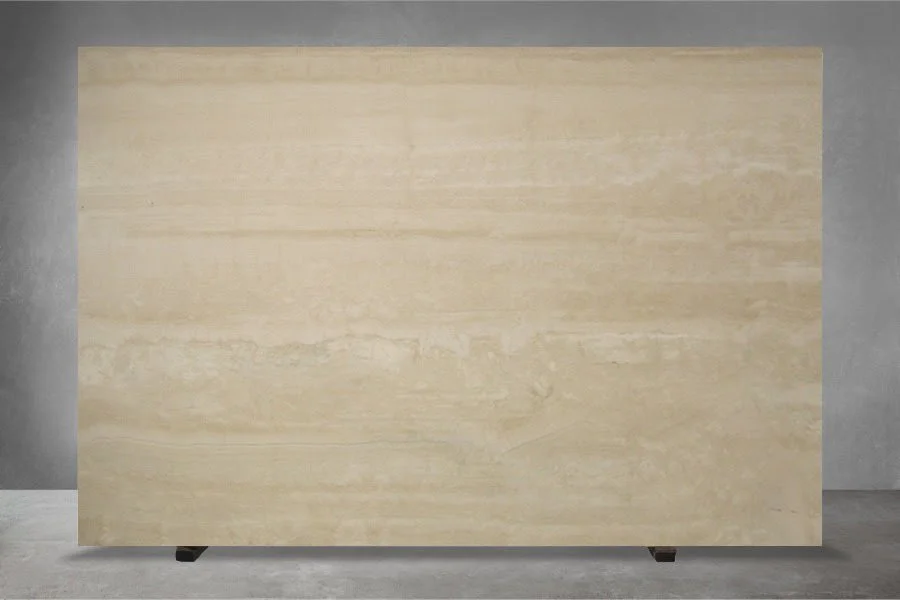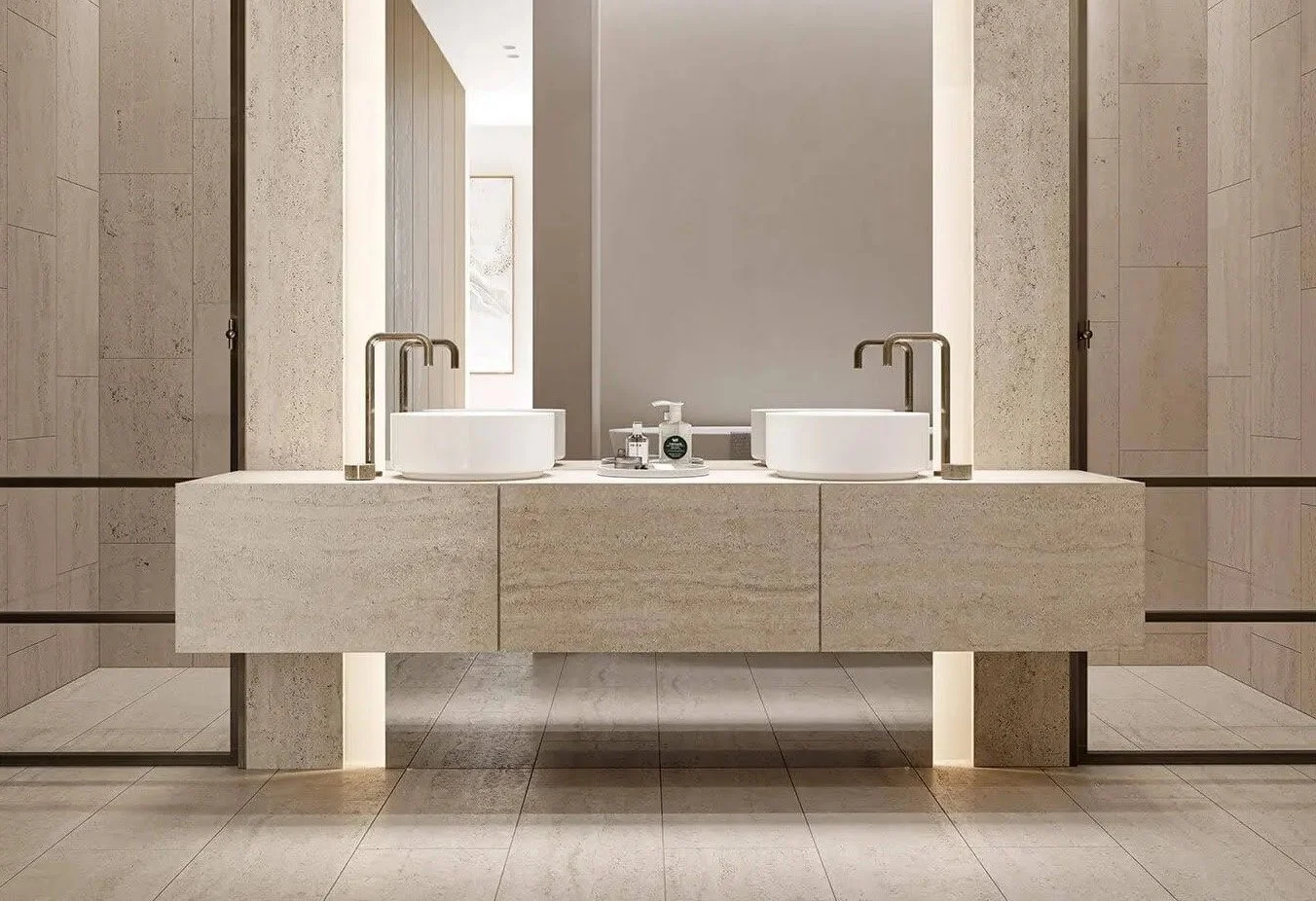Spotlight on Travertine
Natural stone and human applications for design and interiors have existed for thousands of years. Travertine, like other stone types, has been used in many iconic structures globally, from the historic Colosseum in Rome to modern marvels such as the Getty Centre in Los Angeles.
Travertine is a sedimentary rock composed of calcite, the hexagonal form of calcium carbonate (CaCO3). It is formed by calcium carbonate separating from shallow or surface waters through rapid precipitation. Travertine is a variety of limestone that is light in colour and takes a good polish.
Romans used Travertine for constructing buildings and architectural works due to its excellent properties, such as strength, resistance and the ability to be sculpted with ease. The most famous monument made of Travertine is undoubtedly the Colosseum in Rome.
Travertine has a natural array of colours, commonly shades of beige and cream. However, it can also be found in richer shades of red, grey and brown. The colour and pattern of the veining will vary from one piece to the next, meaning that no two pieces of Travertine are alike.
When quarried, Travertine presents micro-cavities, which are not defects but a characteristic of this stone. Depending on the application and the sought-after aesthetics, such micro-cavities can be filled with resin or cement or left unfilled.
Travertine is a robust and very versatile natural stone. Resistant to external agents, it can be used for indoor and outdoor applications, including bathrooms, kitchens, fireplaces and gardens.
Contact us to discuss how Travertine could be used in your projects.




